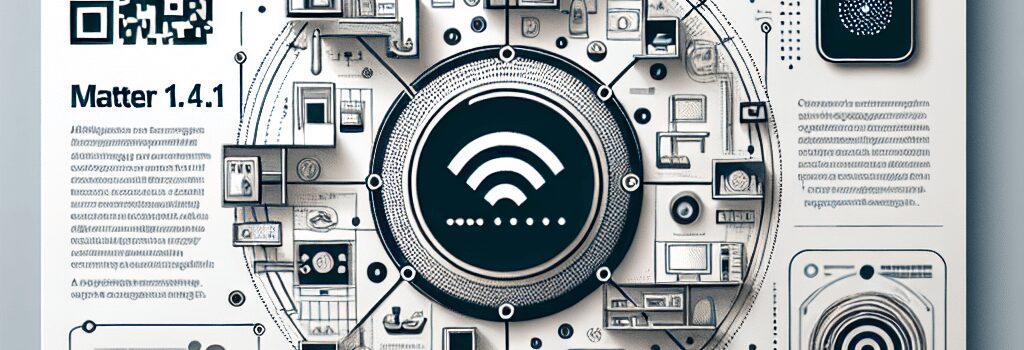Matter 1.4.1 Enhances Smart Home Setup with QR and NFC

By integrating multi-device pairing, NFC commissioning and a unified terms-and-conditions flow, the Connectivity Standards Alliance’s latest Matter revision promises to remove much of the friction from smart-home onboarding. We break down the new features, examine their technical underpinnings and explore how industry leaders are moving to adopt this standard in 2025.
What’s New in Matter 1.4.1?
- Multi-Device QR Codes: Package-level QR codes can now commission entire device bundles in a single scan, reducing repetitive steps for end users.
- NFC-Based Commissioning: Embedded NFC tags allow tap-to-pair workflows—even in recessed sockets or behind fixtures—leveraging BLE for data exchange and Thread for mesh network integration.
- Integrated Terms & Conditions: The Enhanced Setup Flow embeds OEM legal text in the Matter commissioning UI, avoiding app-hops that can interrupt secure pairing.
Technical Deep Dive: Onboarding Enhancements
Matter’s commissioning process relies on a secure channel using PAKE (Password-Authenticated Key Exchange) over Bluetooth LE or Thread. In 1.4.1, the multi-device QR encodes per-device Certificate Signing Requests (CSRs) and IPv6 addresses for Thread endpoints. The scan triggers a commissioning joining request (CSR) for each device, automating the CASE (Certificate-based Secure Session Establishment) handshake. NFC adds a second channel: the tag holds a compressed device descriptor (TLV-encoded), which phones and hubs read via ISO/IEC 14443 before initiating the same CASE flow over BLE.
Security Implications: Device Attestation & Trust Models
Matter’s architecture uses the Device Attestation Certificate (DAC), tied to a manufacturer’s root certificate. Version 1.4.1 strengthens revocation checks by allowing implementers to host OCSP (Online Certificate Status Protocol) responders on local gateways. This offline-capable OCSP staple ensures that compromised or counterfeit devices cannot join your network. Experts at Electric Imp and Silicon Labs note that integrating real-time revocation queries will further harden the onboarding chain.
Industry Adoption & Roadmap
Since the first public release in late 2022, Matter has gained momentum. In March 2025, Samsung announced that SmartThings Hub firmware 1.8 adds Matter 1.4.1 support, enabling multi-device pairing for its Hue-compatible bulbs. Apple’s HomePod firmware 17.4 beta also implements the Enhanced Setup Flow, showing the rapid alignment among major platform holders.
Expert Perspectives
- Lisa Arendt, Principal Architect at Connectivity Standards Alliance: “By standardizing multi-device QR codes, we’re reducing 80% of repetitive scans our test users reported. It’s a game changer for bundle sales and installer workflows.”
- Dr. Kavita Desai, IoT Security Lead at SecureTech: “Matter 1.4.1’s integrated OCSP support is vital. It ensures enterprises can revoke devices in the field without a full cloud dependency, aligning with zero-trust principles.”
Additional Analysis: Impact on OEM Manufacturing & Firmware Updates
OEMs must update their hardware NVM to embed NFC tags and update firmware stacks to expose new commissioning endpoints. Chip vendors like NXP and STMicroelectronics have already released SDK patches supporting Matter 1.4.1 commissioning clusters. Manufacturers will need to run new certification tests—covering Thread mesh reliability and QR digest integrity checks—before shipping devices.
Looking Ahead: Matter 2.0 & Beyond
Work is already underway on Matter 2.0, targeting advanced features such as voice-enabled commissioning, richer telemetry clusters for predictive maintenance and tighter integration with cloud-native IoT platforms. Enterprises and smart-building integrators should watch for the next CSA developer summit in Q4 2025, where draft specs for advanced resource subscriptions and federated identity provisioning will be unveiled.
With Matter 1.4.1 rolling out across major hubs and device families, the smart-home industry is finally converging on a friction-free onboarding model. The result: end users spend less time setting up and more time enjoying their connected living spaces.